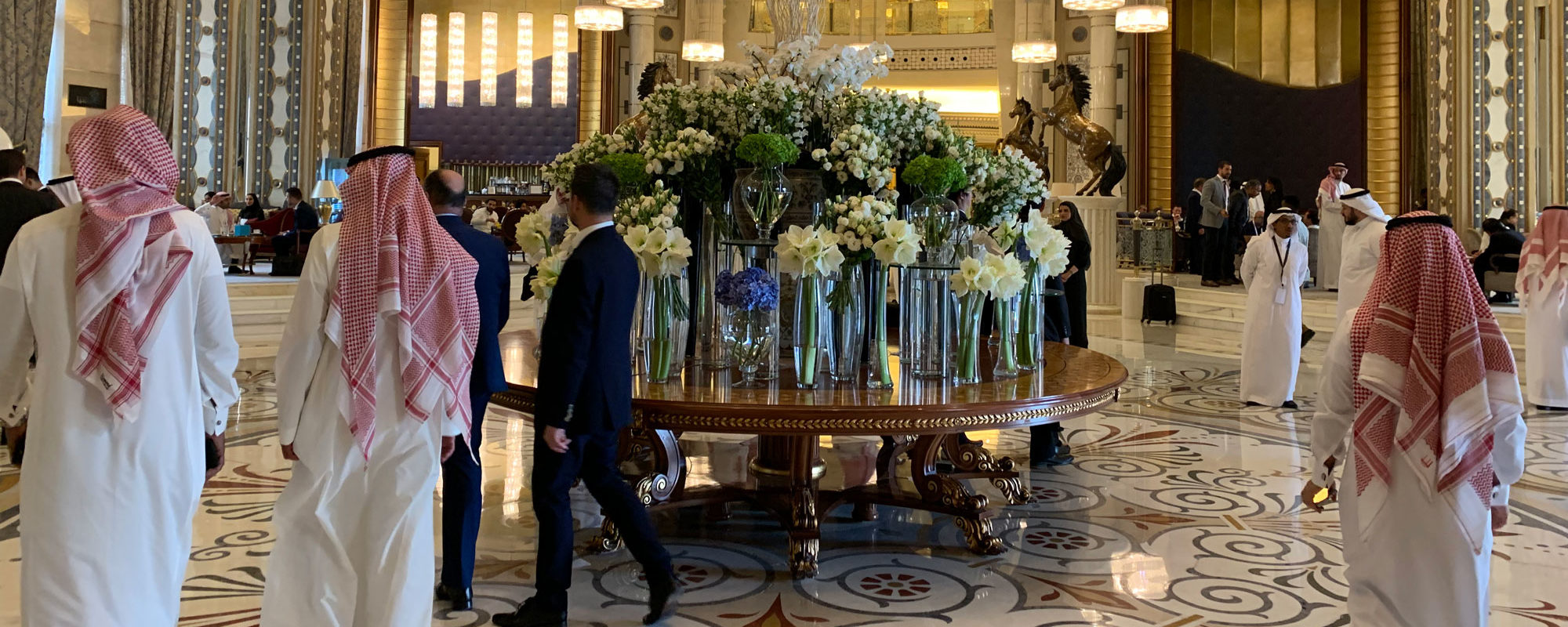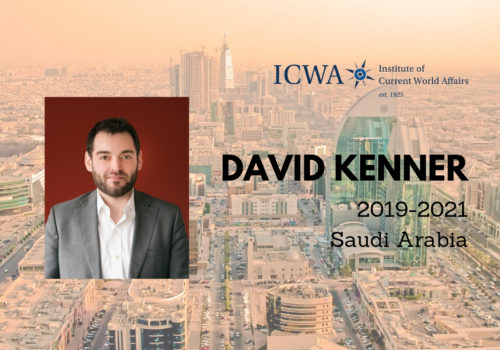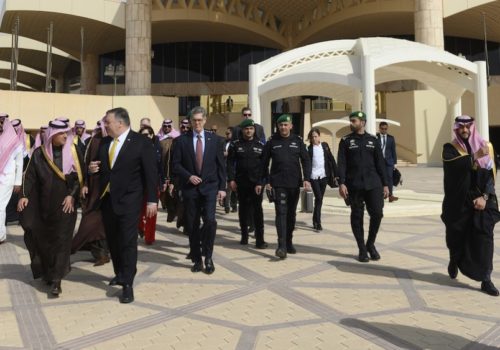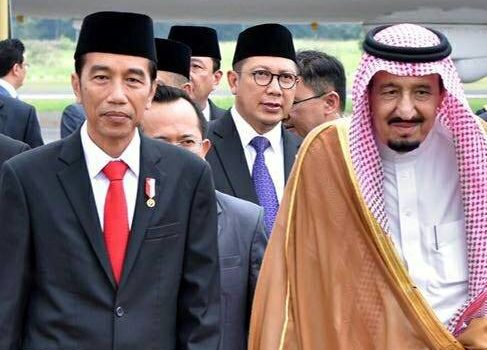RIYADH — I came face to face with a major subject of my research even before clearing customs at Riyadh airport. Fresh off an evening flight from Beirut, I handed my passport to a Saudi woman dressed in a black niqab. She stamped my visa, instructed me how to use a machine that took my fingerprints, then with a smile (I think) pointed me in the direction of baggage claim. I had officially entered Saudi Arabia.
As a visiting fellow at the King Faisal Center for Research and Islamic Studies, which sponsored my visa, I am charged with researching the implementation of the country’s ambitious economic reform package, dubbed Vision 2030. The plan, advertised across Riyadh with large posters featuring the smiling figures of King Salman and Crown Prince Mohammed bin Salman—the power behind the throne—represents an attempt to wean the kingdom off oil revenues and radically revamp sectors such as education, recreation and tourism.
For many Saudis, the most important part is the provision to create more jobs: The plan aims to lower the unemployment rate from roughly 13 percent to seven percent and increase female employment to 30 percent of the workforce by 2030. The country still has a long way to go, but the Saudi women manning the passport line—a job once done by foreign workers—are a small sign of the effort to transform the fundamentals of the kingdom’s economy.
My interest in this moment in Saudi history, however, goes beyond the dry statistics of economic development. Saudis coming of age in the current moment are going to be the first generation to pay taxes, be forced to find jobs in the private sector, and not be able to rely on as generous a social safety net as the government provided to previous generations. As an ICWA fellow, I am interested in how these grand economic changes intersect with Saudi society—how they are affecting how Saudis go about their lives, and even the cities they inhabit.
Massive sprawl
I exited the airport, summoned an Uber and within minutes was being whisked toward the city center. We were traveling down a wide highway bordered by no small number of American fast food chains, including a Burger King and a Buffalo Wild Wings.
Through my reading, I already knew that Riyadh’s design was the brainchild of Constantinos A. Doxiados, a Greek urban planner who endeavored to construct cities so that citizens of developing nations would “identify themselves with the West.” I knew the concepts he employed, many of them borrowed from Le Corbusier, and was acquainted with the academic literature about how his efforts had shaped the city’s landscape. But it was not until I watched the city pass by under yellow streetlights, a collection of neon signs and gray and brown concrete blocks, that I appreciated how truly massive Riyadh is.
The Saudi capital covers nearly 700 square miles, more than double the land area of New York City. But it contains roughly a million fewer people than New York. The result is a sprawling metropolis full of empty spaces and speeding cars, racing between neighborhoods linked by large freeways. The sprawl often makes the city feel inaccessible: While I had come to know Cairo and Beirut—two other cities in the Arab world where I have lived—simply by walking around, I quickly discovered that it would be difficult to do the same in Riyadh.
The city’s relative inaccessibility is mirrored in my work life. In Beirut, I have in my phone the numbers of dozens of members of parliament, government ministers, diplomats and newspaper columnists. All it takes are a few phone calls to unearth details about the news of the day—officials are often happy to gossip about the latest political drama until late in the night. Not so in Riyadh. I needed someone—usually a member of the King Faisal Center’s helpful staff or a trusted friend—to make formal introductions to most of the people I met. Even after that was accomplished, it was sometimes only the beginning of the struggle: In one case, an official rescheduled a meeting for three straight weeks.

Still, although Riyadh may be a hard nut to crack, it is far from impenetrable. In my first month, I spent my time trying to understand two neighborhoods: Olaya, a central financial district where I lived and worked, and Sulimaniya, a nearby commercial district. The streets in both neighborhoods are maze-like and full of dust, as the main thoroughfares have been torn up as part of construction for a metro. Cars speed by quickly, and in many places only construction workers or other foreign laborers attempt to cross them on foot. It has also been unseasonably cool, but already my friends are speaking ominously of the warm summer months to come.
Social liberalization
I also sought out the city’s rare public spaces. Outside the national museum one Friday, I saw families setting up picnic blankets on a concrete plaza while kids played soccer and rode bicycles around them. And in Diriyya, the ancestral home of the Al Saud family, children run around the green parks and small streams beside the traditional mud brick buildings refurbished by the government. In one spot, children played games at a tent sponsored by SABIC, the state-owned petrochemical company.
The social liberalization effort is visible throughout the city. Some of that is part and parcel of the economic reforms: The movie theatre I went to near my home, which was packed on a Friday night, is both an attempt to give young Saudis more entertainment options and among the first seeds of an effort to build a new sector of the economy. Granting women the right to drive, meanwhile, is intended to pave the way for increased female employment.
In Diriyya, the government has constructed the new Culture Ministry—the body charged with organizing concerts and film festivals, and rebuilding heritage sites—next to a center of research into the teachings of Muhammad Ibn Abdul Wahhab. The puritanical 18th-century preacher, whose alliance with the ruling family helped shape the modern Saudi state, violently opposed music or veneration of the country’s pre-Islamic history. My interlocutor, at least, saw the placement of the ministry as a clear thumbing of the nose at the country’s fundamentalists.

Elsewhere in the city, soft background music plays in many cafes. A growing number of establishments cater to Saudi hipsters: men and women who want to drink cortados while tapping away on their laptops, or groups of women who congregate in the “family” sections. In a few places, the traditional gender segregation is breaking down as well. That would have been unthinkable, I was told, before the government limited the authority of the religious police.
Some women are not only driving themselves around Riyadh but also making a living with their cars. Calling an Uber to return home one night, I was picked up by Nojoud, a 22-year old woman from Riyadh. She was dressed head to toe in black and wore large, round-rimmed glasses; she drove tentatively, and it was only after a few wrong turns that we arrived at our destination. She said “tens” of women were driving for Uber, expressing pride that her car could provide a safe space for other women: “In a taxi sometimes men behave badly,” she said. Why choose this job in particular? “There are no jobs for girls here,” she said, waving her hand in frustration.
First steps
That was just one comment among many that showed how, despite Vision 2030’s stated goals, Saudi Arabia still has a long way to go to reach them. There are still, evidently, many jobs Saudis will not do, preferring instead to hold out hope for public sector jobs that offer higher salaries than private sector employment for fewer hours of work. Although 1.5 million expat laborers left the kingdom between 2016 and 2018—a result of increased fees on foreign workers—the number of Saudis finding work outside the security sector rose by only a few hundred thousand.
Nor can Saudis simply rely on the windfall from oil revenues to replace their salaries. Saudi Arabia may be the world’s largest oil exporter, but it also has a population that dwarfs the other Arab monarchies of the Gulf. And oil revenues are increasingly insufficient to provide for citizens’ needs: While Saudi Arabia’s per capita income was 50 percent higher than that of the United States in 1980, today the average income is roughly a third of America’s.

The economic struggles are evident across Riyadh. For my first month in the city, I made the unwise decision to rent an AirBnB in an area that was a five-minute walk from the Kingdom Tower, a glittering skyscraper that soars over the city’s business district. Outside the building’s pale yellow walls, it looked like a respectable middle-class compound in a respectable middle-class district. Inside, however, it contained a network of bare bones one-room apartments, most featuring a dingy rug, a bed squeezed against the door, and a kitchen and shower pressed perilously close together. I awoke one night during a storm when a small waterfall broke through the ceiling and landed straight on my head.
That was my first living situation in Riyadh, so there is always a chance it was anomalous. However, what is not anomalous—what we know from reams of studies and statistics—is that the economy now faces an inflection point. If it fails to diversify its sources of revenue, increase Saudi employment and bolster foreign investment, it could fail to provide the sort of lifestyle to which many Saudis have become accustomed. It is my ambition, over the next two years, to merge academics’ and policymakers’ narratives about Saudi Arabia with my own observations about life as it is lived by regular Saudis, as they struggle to adapt to the momentous changes occurring around them.
It may be harder to meet Saudis than people in other countries in the Arab world, but I have found, once the first introduction is made, that they are almost uniformly generous and eager to speak with a curious American researcher. They have a sense that they are misunderstood, and want to correct what they see as false impressions of their country and society.
The literature, economics, history, and culture of this country represent an embarrassment of riches for my work. I am looking forward to using the luxury of time afforded to me by this ICWA fellowship to dive into all those subjects over the next two years.




